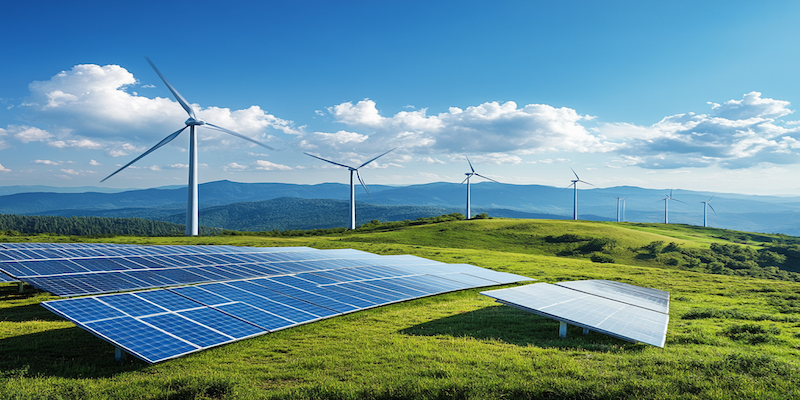How Renewable Energy Can Lead to a Pollution-Free Environment
Introduction
Pollution is one of the greatest environmental challenges of our time, affecting air, water, and land quality. Traditional energy sources, such as coal, oil, and natural gas, contribute significantly to environmental degradation. However, renewable energy sources—like solar, wind, hydro, and geothermal—offer a sustainable path toward a cleaner and pollution-free future. In this blog, we’ll explore how renewable energy can help eliminate pollution and create a healthier planet.

The Impact of Fossil Fuels on Pollution
Fossil fuels are the primary contributors to pollution, leading to various environmental problems:
- Air Pollution: Burning coal, oil, and gas releases harmful pollutants such as carbon dioxide (CO₂), sulfur dioxide (SO₂), and nitrogen oxides (NOₓ), causing smog, respiratory diseases, and global warming.
- Water Pollution: Oil spills, coal mining, and fracking contaminate water sources, affecting marine life and drinking water supplies.
- Soil Degradation: Extraction and burning of fossil fuels damage ecosystems and degrade soil quality.
How Renewable Energy Reduces Pollution
1. Clean Air with Solar and Wind Energy
- Solar and wind energy generate electricity without emitting greenhouse gases or air pollutants.
- Unlike coal and gas plants, solar panels and wind turbines do not release toxic chemicals into the atmosphere.
- Reduced air pollution lowers the risk of respiratory diseases and improves overall public health.
2. Protecting Water Resources with Hydro and Geothermal Energy
- Fossil fuel extraction and processing require large amounts of water, leading to contamination.
- Hydropower and geothermal energy have minimal water usage compared to coal and natural gas plants.
- A shift to renewables preserves clean water sources for future generations.
3. Reducing Land Degradation and Deforestation
- Traditional energy production leads to deforestation, habitat destruction, and soil erosion.
- Solar farms and offshore wind farms require less land compared to mining operations.
- Sustainable renewable energy projects help protect ecosystems and biodiversity.

The Role of Policy and Innovation
- Governments and organizations are investing in clean energy initiatives to replace fossil fuels.
- Technological advancements in battery storage, grid infrastructure, and energy efficiency are making renewables more accessible and affordable.
- Public awareness and community-driven renewable energy projects are crucial in accelerating the transition to a pollution-free environment.
Conclusion
Switching to renewable energy is one of the most effective ways to combat pollution and climate change. By harnessing the power of the sun, wind, water, and earth, we can reduce harmful emissions, protect natural resources, and create a cleaner, healthier world. The future of energy lies in sustainability, and embracing renewable sources is the key to a pollution-free environment.
Are you ready to be a part of the clean energy revolution? Share your thoughts in the comments below!





